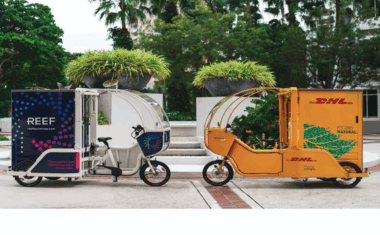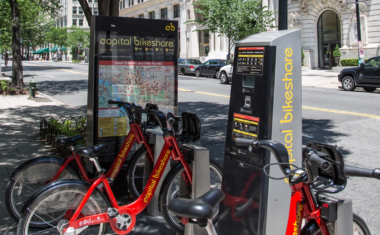Alternative Fuel Stations for Heavy Duty Vehicles
- 7 min to read

Stockholm, Sweden
About the city. Stockholm, the capital of Sweden, has been striving for many years to make it a clean and healthy place to live. Already in the 60s and 70s, several areas of the city were turned into pedestrian zones. And in 1996, it introduced environmental zones that set emission requirements for trucks in the central areas of the city.
Goal
The aim of the project is to ensure infrastructure is established and support users in making a transition to alternatively-fuelled heavy goods vehicles.
Implementation period. The project started in 2016.
Fact
70% of the total volume of goods transported on Swedish roads remains in the same county. This means that the largest flow of goods on roads is actually in urban areas. Stockholm has several large terminals for goods within the municipality. Calculations by the Swedish Transport Agency show that the volume of cargo in Sweden overall is expected to increase by about 28% by 2020. Stockholm is expected to grow even more due to the expected increase in population.
Solutions
The City of Stockholm recognizes that in order to get more heavy vehicles running on biofuels, filling stations that supply biofuels are needed. The City of Stockholm is trying to find suitable locations for these new stations.
Land is leased to gas station operators at a standard price, on the condition that at least two different types of biofuels are supplied at each station. Some of the stations will be completely new, and some will add alternative fuels to existing diesel stations.
Both electric and sustainable biofuels are needed to replace fossil-fuel vehicles. Each new station will have to provide at least two of the following alternative fuels:
Biogas: methane gas from wastewater and food waste treatment plants in Stockholm. Purified and compressed biogas can be used in CNG vehicles.
ED95: An ethanol fuel mix with 95 per cent ethanol and 5 per cent additive which makes the fuel ignite. ED95 is produced in Sweden from cereals and leftovers from the paper industry. Ethanol is also imported from other parts of the world.
HVO: hydrogenated vegetable oil, processed vegetable and animal oils with diesel quality. HVO can be used in diesel engines.
RME: rapeseed methyl ether, a form of biodiesel derived from rapeseed.
Challenges
Gas stations generally have low priority, which creates long waiting times. This is a major problem that was identified as part of the GrowSmarter work and has been brought to the level of management. Sometimes the city plan needs to be changed so that a new gas station can be built. Installing new pumps on existing facilities located on private land is relatively easy in the sense that the installations are made on a commercial basis. However, the installation takes much longer if the detailed plans need to be changed. Changing the city plan is a process that can take up to two years. Some aspects of data collection are sensitive for the companies involved, which are not project partners. To address these issues, there is an enhanced internal dialogue with the City Planning and Development Administration.
Team
The City of Stockholm, Stockholm Gasnät AB, OKQ8, ST1 (Shell) and Statoil
Timeline
The result to date is that one filling station for heavy vehicles has been opened in Kallhäll north of the city. The station provides ED95, biogas and HVO. In addition, there are two signed agreements between the city of Stockholm and OKQ8 regarding two new refuelling complexes, one located in Orst (will have ED95, biogas and HVO), and the other located near Bromma airport (will provide HVO). The third contract was signed between Preem Petroleum and the city of Stockholm regarding the fourth place (will have ED95, biogas and HVO). In total, this adds up to 10 refuelling alternatives.
This allows to increase the number of heavy vehicles running on biofuels in Stockholm, without having to drive 20 km to a gas station. They will also get a signal priority to be more competitive than heavy vehicles powered by fossil fuels. Biofuel-powered trucks reduce both local and carbon dioxide emissions, thereby reducing the negative impact of transport. In some cases, the noise level will also decrease.
If you notice an error or inaccuracy in our editorials, please email [email protected] so we can look into it.






